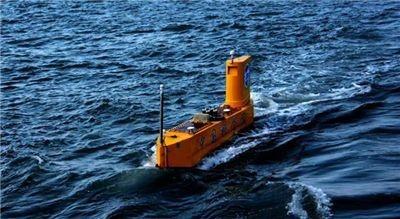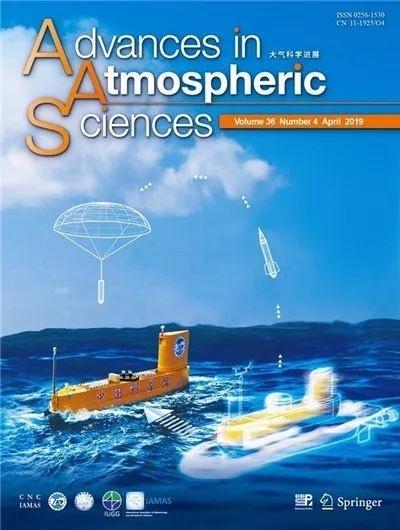Semi-submersible marine meteorological exploration unmanned boat research progress
—— Semi-submersible marine meteorological exploration unmanned boat research progress
[ Info Diffusion:中国科学院大气物理研究所 | Times:2019-04-03 | Hits:2019 ]
China's coastline is long, the coastal economy is developed, and the seas adjacent to the mainland and islands are vast, with abundant resources. With the implementation of the maritime powers and the “One Belt, One Road” strategy, activities such as maritime transportation, fish farming, oil and gas exploration, scientific research, tourism and military are increasingly frequent. However, the climate in China's coastal areas and coastal areas is variable, meteorological conditions and sea and land environments are complex, and marine meteorological disasters such as typhoon storms, strong winds, storm surges, heavy fog and strong convective weather at sea often occur. At present, there are still many shortcomings in the scientific understanding of the evolution of these marine catastrophic weather, and it is difficult to accurately predict these marine catastrophic weather. The lack of meteorological observation data at sea, especially in the open sea, is the main reason.
Meteorological observations on the oceans are mainly provided by satellite remote sensing, merchant ship weather reports and non-operational aircraft observations in developed countries and regions, but there is a huge gap in quality and quantity compared to the information provided by the land station network. Meet scientific research and business needs. This situation has limited the development of typhoon generation and development mechanisms, sea-air interactions, and climate change related to El Niño events, which has greatly hindered the improvement of marine meteorological and hydrological environment predictions, especially typhoon weather forecasting capabilities. There are still very few meteorological and hydrological observation sites on the vast seas around China, and there are not many buoys arranged offshore. Merchant ships can only provide non-continuous and scattered meteorological sea state reports, while sea surveillance aircraft cannot provide meteorological and hydrological information in bad weather; islands and integrated survey ships have less meteorological sounding, lacking coverage width and time-continuous tropospheric profile probing .
At present, China lacks effective and economical technical means for meteorological detection in the open sea, especially for vertical sounding at sea. At home and abroad, there is no offshore meteorological observation system that can be used for sounding during long-distance navigation, especially for offshore automatic navigation platforms and comprehensive observation techniques that do not survive in complex sea conditions and are suitable for meteorological detection. To change this situation as soon as possible, it is necessary to develop an in-situ detection technology for marine meteorological environment that is automatically deployed at sea and survives and is practical under any sea conditions, and develops a new type of maritime meteorological hydrological observation platform for scientific research and business sharing.
In May 2016, the unmanned boat research and development team of the Institute of Atmospheric Physics of the Chinese Academy of Sciences successfully developed a special semi-submarine marine meteorological observation unmanned boat based on self-controlled driving. The boat is a semi-submersible structure. Most of the hull is under the waterline. Only the equipment warehouse is above the water surface, which greatly reduces the impact of the waves on the hull, making the unmanned boat very stable. At the same time, the unmanned boat has a heavy center of gravity. Far below its buoyancy, the unmanned boat has self-righting function, which greatly improves its survivability under severe sea conditions.
From May 2016 to November 2017, the semi-submersible marine meteorological observation unmanned boat carried out a series of river tests and sea trials in the Huaihe River and the Bohai Sea, testing the functions and technical maturity of the semi-submersible marine meteorological observation unmanned boats. Commercialized feasibility, and the first launch of sounding rockets on unmanned ships; real-time meteorological observations of sea, sea surface temperature and temperature, humidity, air pressure and vertical profiles of wind speed and wind direction in the sea boundary layer. The series of river and sea trials have successfully demonstrated that this semi-submersible hull structure design combined with automatic navigation control, real-time satellite data communication, meteorological hydrological automatic observation and sounding rocket launching technology, enables the boat to be able to travel long distances and long distances. And working under complex sea conditions, capable of continuous and real-time sea surface meteorological observations, capable of meteorological sounding detection, real-time data and command transmission, and working condition monitoring for the middle and lower troposphere; achieving ocean, especially offshore meteorological and hydrological elements Fixed-point or voyage detection, as a mobile automatic weather station and sounding station for autonomous deployment and recovery at sea, real-time monitoring of winds such as gale, fog and thunderstorms at sea, while monitoring parameters such as sea temperature, sea salt and current, for marine meteorological and hydrological services Provide information with scientific research. These marine meteorological observations can promote sea-air interactions, estimates of sensible heat and latent heat fluxes at the sea-atmosphere, ocean boundary layer simulations, and marine satellite product validation.
The research results were selected as the fourth issue of the 2019 issue of Advances in Atmospheric Sciences.

